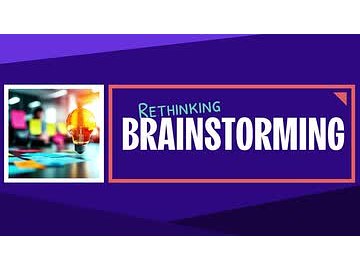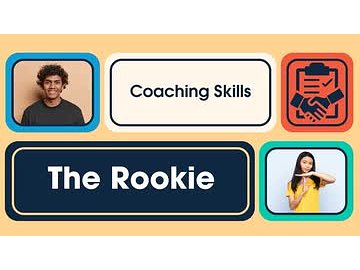Supervision
Supervisory training is beneficial to anyone with a direct report, but training these supervisors can be a difficult task when they make up a smaller group of the employee base. Many companies wait to train them until they have a large enough group, which means that training new supervisors can take a back seat for months or even years.
This is where our training makes a sensible addition to your supervisory training program. HSI's training gives supervisors access to content 24/7, on any device.
This is where our training makes a sensible addition to your supervisory training program. HSI's training gives supervisors access to content 24/7, on any device.
Supervisors can benefit from our training immediately as they transition into their new role, or as refresher training years later. With an increased amount of responsibility, supervisors have less time to dedicate to training and will benefit from our short-form courses that don't take up too much of their busy day.
Keywords: business skills, business, supervise, supervisor, supervision, HSI-ej4, Supervisory training, Supervision Training, supervision, Supervision Course
培训班

Small Business Management Toolkit
Visited 969 times
$ 30.00

Building a Business Plan Course
Visited 1,023 times
$ 30.00
Supervision

The Leader as a Coach: Introduction to Coaching
Coaching is a critical competency for modern managers, and a skill that all levels of management need to develop and deploy. In today's world, the traditional command and control style of leadership is no longer viable. It's an absolute necessity for managers to provide support and guidance, in addition to providing directives and assigning tasks. In this series, we're going to teach you how to incorporate the "leader as a coach" mindset into your leadership or management style. You'll learn about several different coaching skills models that are used for specific coaching situations, and how to use them to raise your game as a leader. In this first program, we'll go over the difference between coaching and managing.

The Leader as a Coach: The GROW Model
The GROW model is one of the most recognized and influential coaching models in use today. Its relative simplicity and logic make it easy to understand and use, rendering it a favorite among executive coaches and managers. The GROW model's four-step approach is used to help teams and employees improve performance, solve problems, make better decisions, learn new skills, and reach career goals. In this course, we'll teach you how to put this coaching model into action with your own team.

The Leader as a Coach: The OSCAR Model
The OSCAR model of coaching builds upon, and enhances, the popular GROW model. This solution-oriented coaching method encourages employees to take the lead in their own development, with the full support and encouragement of their coach. In this course, we'll go over the five steps of the OSCAR model, which helps managers increase and improve employee performance and professional efficiency.

The Manager's Role in Reducing Employee Turnover
According to Gallup, 52% of employees who've left their jobs say their manager or organization could've done something to prevent them from leaving. If you're a manager, and you oversee employees that you wish to keep, then this course is for you. Here, we'll talk about what you need to do to keep your employees fulfilled and engaged at work, so they want to stay. We'll talk about the importance of keeping your ear to the ground. We'll explore ways to inspire your team. We'll cover perks that you can offer, and the importance of establishing each individual's growth plan within your company. Lastly, we'll go over high-potential employees, or HiPos, and how to manage these people effectively.

The Leader as a Coach: The CLEAR Model
The CLEAR model is designed to help individuals achieve transformational change based on new values, behaviors, or convictions, as opposed to simply helping them achieve a goal. Just like many other coaching models, CLEAR is an acronym that's used to define the five stages of the process. The stages include contracting, listening, exploring, action, and review. In this program, we'll look at each of these stages, and discuss how to employ this process to drive tangible change.

Making Employees Feel Heard
Building inclusive teams, where everyone feels heard, boosts productivity and profitability. As a matter of fact, 74% of employees report that they're more effective at their job when they feel like they have a voice. It's obviously beneficial to ensure that your team feels heard, so in this course, we'll talk about how to do that. We'll go over ways to generate employee engagement and discuss how to encourage open communication. We'll also talk about getting feedback from your team, go over the importance of transparency, and cover ways to reward good ideas.

The Leader as a Coach: The ACHIEVE Model
The ACHIEVE model is a logical extension of the popular GROW model. It's a systematic seven-step framework for coaching that includes added flexibility and feedback-reactivity, as compared with GROW. In this course, we'll walk viewers through the seven-step process of ACHIEVE.

The Leader as a Coach: The STEPPPA Model
The STEPPPA Model of coaching was developed in 2003 and is based on the fact that behaviors are driven by emotion, which means that action is motivated by emotional commitment. The intent of this technique is to repurpose the emotions of a problem or situation, to lead the way for creating new objectives, outcomes, and paths to success. In this program, we'll walk through each step of STEPPPA.

Mediating Employee Conflicts
Conflicts can arise in the workplace anywhere, and at any time. As a manager, it's helpful to try and diffuse the situation before things get out of hand, and HR needs to get involved. In this course, we'll talk about how to mediate employee conflict. We'll define what mediation is, giving you tips on how to mediate effectively, and in a way that's helpful to both parties. We'll also take viewers through the six steps of successful mediation.

Problem Solving With Your Team
Problem solving: the art of identifying an issue and coming up with a solution. The "identifying an issue" part is easy. Often, problems just land in our laps. The more difficult piece is knowing there's an issue, simple or complex, and developing a way to either fix the problem or work around it. In this course, we'll talk about how to develop your team's ability to problem solve. We'll talk about why problem solving is important and how having that skill is beneficial to any workplace.

The Leader as a Coach: The CIGAR Model
The CIGAR model of coaching is unlike other solutions-focused models, and instead uses a gap analysis approach. This method focuses on the individual's current reality or situation versus possible scenarios. In this course, we'll take viewers through the five steps of the straightforward and easy-to-use CIGAR model.

Doing More With Less
When we talk about doing more with less, it usually means you have less time, less money, or fewer tools and employees. Maybe your organization decided to downsize or restructure, and you've found yourself lacking the resources you once had. Or maybe your business is growing, and you need to find ways to make the most of what you have. Whatever the case, doing more with less is never easy. In this program, we'll talk about how to work smarter, not harder. This includes focusing on the strengths of your team and reprioritizing your goals. We'll also go over the importance of having clear communication, analyzing goals, and planning for the future.

The Leader as a Coach: The FUEL Model
The FUEL model of coaching is particularly effective for specific skill development, career planning discussions, tough performance feedback, a performance issue that's related to a relationship, or a task problem. This model consists of four elements, and that's what we'll discuss in this course.

The Leader as a Coach: The STRIDE Model
The essential aspect of the STRIDE model is that it focuses on the strengths of the individual being coached, so that the whole process becomes a positive experience. It's a simple and sequential model designed to enable individuals to resolve their own problems and to enhance performance. In this program, we'll take a look at the six steps of the STRIDE model and go over how to effectively put it to use.

The Leader as a Coach: Improving Your Coaching Skills
In this series of courses, we walked viewers through eight different coaching models and talked about the importance of incorporating coaching skills into your management style. Each model follows the same basic sequence, but how do you know which model works best for you and your team? That's what we'll go over in this last program on The Leader as a Coach.

Fix That Bad Attitude
Do you have any employees with bad attitudes? It's likely that you do. These people can be found in most workplaces. The question is, "how do you fix it?"
You can't.
A bad attitude is typically a symptom of something else going on. That's what you need to get to the bottom of, and that's what this course is all about. We'll discuss how to identify bad behaviors, how to address those behaviors, and how to coach these people in order to get a more positive, productive mindset.

Inheriting Underperformers
When you inherit team members, you're inheriting employees as they are, which is not trained by you. Some of them might be great as they are, some might quickly adapt to your expectations, and then there might be others who are underperforming. This can be a tricky situation, so in this course, we'll discuss how to work with underperformers. We'll talk about what you should and shouldn't do as you get to know this person, and as they get to know you and your expectations. We'll also review the Can-Do, Will-Do grid, which is a great way to motivate employees and get them to peak performance. Lastly, we'll cover setting clear expectations and goals, and go over proper documentation and discipline if things don't improve.

Documenting Performance: Documentation Do's and Don'ts
Documenting your employees' performance is always important. It helps to create a history of critical events and decisions that happen during the lifecycle of the employee. Proper employee documentation is also necessary and critical in litigation and other proceedings such as unemployment hearings, grievances, arbitrations, EEO complaints, or information requests. These documents are often seen as credible by a judge or arbitrator. Good documentation may deter costly and risky legal action and reduce your exposure as a leader. In this course, we'll talk through some of the do's and don'ts of proper documentation.

Documenting Performance: Legal Issues of Documenting Performance
Documenting your employees' performance is always important. It helps to create a history of critical events and decisions that happen during the lifecycle of the employee. Proper employee documentation is also necessary and critical in litigation and other proceedings such as unemployment hearings, grievances, arbitrations, EEO complaints, or information requests. These documents are often seen as credible by a judge or arbitrator. Good documentation may deter costly and risky legal action and reduce your exposure as a leader. In this Documenting Performance: Legal Issues of Documenting Performance Course, we'll talk through some of the do's and don'ts of proper documentation.

Documenting Performance: Tips to Make Performance Reviews a Breeze
Creating good documentation of your interactions with your team should not be seen as an extra chore. It should be an easy way to create a record of the interactions you have with them. By using some simple tricks, technology, and templates, you can have all the things you need as a leader to promote, coach, or terminate a member of your team. We'll discuss keeping handwritten and electronic records and the most efficient ways to store them. We'll also go over how to organize your notes for each employee and how to use keywords and dates for quick retrieval.

Professional Boundaries: Nepotism and Favoritism
As a manager, it's only human to have employees who you like more than others. But there are ways to handle this tendency toward favoritism in an ethical way. Likewise, you might feel inclined to hire someone you already know, or even someone you're related to. How would you do this without falling into the trap of nepotism? In this program, we'll talk about how to navigate the waters of favoritism and nepotism as a manager. We'll define these terms and discuss some examples in the workplace. We'll go over why favoritism and nepotism can be problematic, how you can change or avoid these scenarios, and how to manage your team in a fair and balanced way.

Professional Boundaries: Conflicts of Interest
Conflicts of interest can create ethical problems within a workplace. These can include issues with employees, managers, customers, vendors, competitors, and so forth. In this course, we'll take a look at what exactly qualifies as a conflict of interest. We'll go over some common scenarios where these conflicts may arise and talk about how to avoid them in the first place. We'll address disclosing conflicts of interest and why it's important to do so. Lastly, we'll talk about what to do when a conflict of interest occurs and how to properly handle it.

Professional Boundaries: Confidentiality
As a manager, you'll be privy to more information than the average employee. Maintaining confidentiality is essential for preserving trust and protecting company information. How do you keep that information private? When do you need to break confidentiality and share information with HR or the authorities? In this course, we'll answer those questions and discuss the importance of confidentiality. We'll talk about the types of private information you may need to protect and how to keep it secure. We'll also talk about instances that may require you to share confidential information and the best way to do so.

Professional Boundaries: Office Romances
Office romances happen. In fact, they're probably much more common than you think, which is why most companies have policies on them. In this program, we'll discuss how to manage romantic relationships among your employees. We'll talk about understanding and communicating your policies, including relationships between different levels or within the same department. We'll also discuss the fine line between flirting and sexual harassment. We'll go over the importance of disclosing these relationships, setting workplace boundaries, and dealing with the fallout of an office romance breakup.

Going from Coworker to Boss
Congratulations! You're the supervisor, now! But, what if you're the supervisor of your former coworkers? Now you must change your role. Watch this course for advice.

You Get What You Expect From Employees
As a manager, you may sometimes be disappointed with the output and effort your staff gives. Maybe you blame this on your company's leadership, or you fault the employees themselves for not being motivated enough. But do you know where the responsibility really lies? With you, their manager! Most likely, if your employees are giving a low effort, it's because YOU didn't set high expectations for their work and output. In this course, we'll discuss how to properly set expectations for high productivity. We'll go over the psychology behind why these tips are so effective. We'll also talk about the importance of SMART goals, clear communication, and healthy recognition.

8 Steps to Effective One on Ones
Here are eight steps to running an effective one on one meeting.

8 Steps to Effective Team Meetings
Here are eight steps to running an effective team meeting.

Rethinking Brainstorming
Brainstorming is more than just tossing out ideas. It's a structured method for generating creative solutions and making plans through open, dynamic discussion. This course explores how to lead effective brainstorming sessions, from setting the stage and encouraging participation to organizing ideas and assigning next steps. Learners will walk away with practical strategies to unlock creativity and drive innovation in any team setting.

SCAMPER Brainstorming
Throwing out ideas and seeing what sticks is one way to brainstorm, but it's certainly not the most effective. There are various ways to generate great ideas, and, in this course, we'll discuss the SCAMPER method. SCAMPER is an acronym that can help take brainstorming to a more creative and in-depth level. The goal is not to come up with a brand-new idea, but to improve an existing product, service, process, or idea. Here, we'll talk about the SCAMPER brainstorming process and help you figure out how to apply it to your business.

Creating a Work Plan To Accomplish Your Organization's Goals
Every successful organization needs clear work plans to keep projects aligned with big-picture goals. In this course, you'll learn how to turn strategic objectives into actionable steps with goals, tasks, resources, and timelines. By the end, you'll be prepared to launch, monitor, and adapt work plans that keep your team accountable and productive.

Driving Performance and Responsibility Within Your Team
You can drive performance and responsibility within your team by focusing on two key elements: cohesion and ownership. This course will help you build team unity through trust and effective communication while fostering a culture where each member is accountable and personally invested in their work.

Managing People Offsite
Chances are, if you don't already manage remote employees, you will in the future. Even if you've been managing employees in the office for years, you'll find there are several differences in the way that you manage remote employees. This program provides some helpful advice on how this can be done.

Managing Interns
Interns are, by definition, inexperienced in your field. They need supervision, feedback, and meaningful work. Giving them grunt work and signing off on their college credit is a disservice to the intern, and to you and your company. If you're managing interns, it's important to remember that great intern managers create great interns. You're in a unique position to vet and mold people into potential employees with your organization. In this course, we'll provide you with tips on becoming a great intern manager.

Helping Employees Use Their Time Wisely
Just like you, your employees have a list of things to do every day. Some days their list is overflowing and they can't possibly get everything done. As a supervisor, it's up to you to help your employees make the best use of their time to maximize their productivity.

Successful Delegation
Delegation isn't just about lightening your workload - it's a leadership skill that builds team capacity and supports professional growth. This lesson explores how to delegate with purpose, match tasks to team members, and maintain oversight while empowering others.

Conducting a Performance Review
Performance reviews, when done well, present valuable opportunities to inspire, motivate, and support your team's growth. This course guides you through the entire review process-before, during, and after the conversation. You'll learn how to prepare effectively, conduct productive face-to-face meetings, and follow up appropriately to ensure continued development.

Managing for Engagement: Engagement Matters
Engagement is having an emotional connection to the work you do, to the people you work with, and the organization itself. It's a willingness to continue to improve and stay dedicated to your work. And it's a critical component to employee satisfaction and productivity. But according to a Gallup poll, less than 20% of employees are engaged. Yikes!
In this course, we'll talk about the importance of improving this statistic among your team. We'll discuss how not increasing this number can directly impact your bottom line, and why disengagement is so prevalent. We'll also go over ways to measure and track engagement.

Managing for Engagement: Measuring Employee Engagement
Measuring employee engagement requires consideration of many factors. This program discusses those measurable elements to help you keep your employees productive and engaged.

Managing for Engagement: Creating Engagement
In the previous course, Engagement Matters, we discovered that less than 20% of employees are engaged in their work and how that directly impacts the bottom line. Here, we'll discuss how to change this staggering percentage by addressing the five key elements of engagement. We'll take a look at each element to help you connect and encourage the members of your team, getting them to their best level of performance.

Managing for Engagement: Creating an Engaged Organization
Many research institutions have compiled lists suggesting how to increase employee engagement. If we go through some of those lists, and pull out major commonalities, we get a good idea of things we can do, as an overall organization, to engage our employees.

Managing for the Grapevine
Employees want to have as much information as possible. They want open communication about what's happening in their department, with their boss, with the overall company, etc. But much of the information that falls onto your desk, as a manager, is on a need-to-know basis. Yet, somehow, data often makes its way into the ears of your team, whether it's factual or not. In this course, we'll talk about how to manage the grapevine within your workplace. We'll talk about the ways that information is typically shared, and how you can, and should, get in front of important information that could leak out. We'll also discuss how to deal with rumors.

Positivity: Staying Positive
"I hate my job." "Why don't I make more money?" "My boss is the worst!" "I loathe my commute." Maybe you've muttered these words a time or two. Or perhaps you've had similar thoughts swirling around in your brain for awhile. Unfortunately, negative thinking leads to... more negativity. It's a vicious cycle that you must consciously choose to stop. In this program, we'll talk about ways to find more joy and optimism in your workday. We'll offer some tips to put an end to negative thinking and go through the benefits of positivity, for both your work and personal life.

Introverts and Extroverts: Introduction to Introverts and Extroverts
Who's an extrovert? Who's an introvert? What's the difference? And why does this matter to me? This concept of introversion and extroversion was popularized by Carl Jung, but has gained new movement by Susan Cain through her Ted Talk "The Power of Introverts," and her book. Workplaces are reconsidering how they manage employees and meetings. Introverts are rallying to remind society that they bring value and that they have good ideas. As a result, extroverts are defending themselves in an effort to remind us that they're not just jokesters and socializers. Some interesting concepts have come from these discussions. In this series, we will summarize some of what's being said, and help you navigate some practices that will make your teams more productive.

Introverts and Extroverts: Managing Extroverts
Extroverts are social and have a lot to say. In your office, these are the people who are quick to speak up with ideas, they get into lively debates, they have the most fun at the holiday parties, and generally keep the energy up around your office. You know who the extroverts are on your team, so this program will help you learn how to best manage them.

Introverts and Extroverts: Managing Introverts
Introverts contribute a lot to your team. Introverts have excellent memories, are thorough planners, are great problem solvers, have developed motor skills, and are good at self-regulation. In your office, introverts are happy to be left to do their work. In many ways, they are the backbone to your organization. They quietly do their job, meet deadlines, don't disrupt the day-to-day operations, and keep things moving along as planned. This program will cover how to manage the introverts on your team.

Coaching Skills: 01. Introduction to Coaching Skills
Managers often struggle with treating every employee equally, even though each person brings a unique background, skill level, and motivation to the table. You’ll be more effective as a coach when you flex your approach to fit their development stage, whether they’re a rookie or a captain. Applying these skills will help you guide individuals more effectively and improve the performance of your entire team.

Coaching Skills: 02. The Rookie
Every new employee arrives with motivation but also uncertainty about how to succeed. As a manager, you'll learn how to provide clear guidance and structured support that builds both trust and confidence. By applying this coaching style, you can turn rookies into reliable contributors who engage quickly and grow steadily.

Coaching Skills: 03. The Everyday Player
As employees move beyond the rookie phase, they become everyday players who contribute consistently but still need coaching support. Learn how to balance guidance and autonomy, offering encouragement while also providing challenges that stretch their skills. This approach helps you foster steady growth, build confidence, and prepare them for their next phase of development.

Coaching Skills: 04. The Key Player
Key players are employees who operate with high competence and motivation, requiring a coaching shift from directing to supporting and delegating. Learn how to involve key players in decisions and keep them engaged through autonomy, recognition, and fair workload management.

Coaching Skills: 05. The Captain
High performing workers, known as captains, take ownership, influence peers, and operate as extensions of leadership-but they still need purposeful coaching that respects their autonomy. Learn how to use a light touch approach that emphasizes empowerment, targeted check-ins, and strategic delegation. The result is higher engagement, better problem spotting from the front line, and scalable leadership capacity you can rely on in day to day operations.

Coaching Skills: 06. The Coaching Conversation
Great coaching conversations don't happen by chance-they're the result of preparation, structure, and follow-through. Learn how to guide performance discussions that encourage self-awareness and steady growth, including strategies to turn everyday feedback moments into opportunities for skill-building and confidence.

Giving Feedback as a Manager
This course empowers managers with the skills to provide effective feedback by ensuring that it's specific, timely, and factual. Participants will learn to deliver feedback that motivates and supports employees, fostering a culture of growth and improved performance.

Analyzing Employee Performance: Introduction to the Can Do, Will Do Grid
Looking at your team, what percentage of your employees do 100% of their job, 100% correct, 100% of the time? The obvious answer is zero. There's always room for improvement. The question is, what can they do to get better? And what are they willing to do to improve? In this course, we'll introduce viewers to a four-part grid that helps you analyze each individual employee's performance to establish what they are doing, what they should be doing, what they're not doing, and why.

Analyzing Employee Performance: Utilizing the Can Do, Will Do Grid
Once you've evaluated an employee using the Can Do, Will Do grid, using their job description and expectations to guide your analysis, what's next? We need to take everything that's not in the desired Can Do, Will Do quadrant and figure out how to get it there. That's exactly what we'll cover in this course. We'll talk about how encouragement, training, transferring duties, and changing expectations will help get your employees to peak performance.

Employee Recognition
Regardless of how you approach recognition, formal versus informal, group versus individual, or hopefully a mixture of all of these, the most important thing is that you actively participate in employee recognition.

Progressive Discipline
From time to time you will have discipline somebody. If you do it progressively, it will work better for you.

Analyzing Employee Performance: Motivating Won't Do's Using the Can Do, Will Do Grid
By now you should be familiar with the Can Do, Will Do grid and how it applies to analyzing the performance of each of your employees. Moving an employee out of a Can't Do or Won't Do quadrant is difficult, requiring a lot of encouragement and training. In this course, we'll talk about how to motivate your employees to make that change. We'll go over the four types of motivation and discuss their pros and cons.

Supervising a Narcissist
Have you worked with someone who had an inflated sense of self-importance? Someone who has a skewed sense of reality, and who ignores the needs of others, while serving only their own interests? This type of person is a narcissist, and supervising them can be challenging, if you're unprepared. In this course, we'll talk about how to manage a narcissist. We'll discuss the traits that make them difficult to work with, but also the positive attributes they can bring to the workplace. We'll also go over Kurt Lewin's Change Management Model, which will help you coach narcissists to better handle criticism and discipline.

Managing Up: The Art of Managing Your Manager
Managing Up is the idea that you can create a productive relationship by being assertive and taking control of your career. This course will explain how to proactively work to create a better relationship with your boss.

Riding Along with Sales Reps
Part of being a manager is watching your employees in action. Managing employees that are onsite is easy since you get to see them on a regular basis. But what if you have salespeople whose jobs keep them on the road? Field Sales Coaching, or a ride along, is the best way to observe your over-the-road employees.

Running a Sales Meeting
How do you make your sales meetings effective? How do you get your employees there? How do you get them to want to be there? Well, it all starts with the basics.

Six Wrong Ways to Manage
When it comes to managing a team, you don't have to look far to find management tips and advice. There are literally thousands of books, articles, and podcasts on leadership styles, coaching methods, and getting the most out of your team; the list goes on and on. This course is designed to inform you of what NOT to do. We're going to talk about six common pitfalls that some managers make, particularly when they're new to a leadership role. We'll discuss what to do if you find yourself in one of these situations, and how to avoid them altogether.

Impedership
Guess what the leading cause of workplace dissatisfaction is? Pay? Nope. Culture? Incorrect. It's poor management. 65% of Americans are unhappy with their jobs, and you don't need to be a math whiz to determine that these statistics affect you and those working around you. If you're in a leadership position of any kind, you need to pay close attention to this course, as we discuss how some bosses unknowingly impede their teams, rather than help them succeed. We'll talk about the history of the term "impedership," what it means, and the various forms of it that you'll want to avoid.

Buy This Course
Price :
$ 62.00 ( Per License )
Visited: 857 Times
Difficulty: Normal
Resold modules appear on your website. You earn syndication share from each purchase. Contact Coggno to learn more on how to embed your own Portable Webshop in your website.